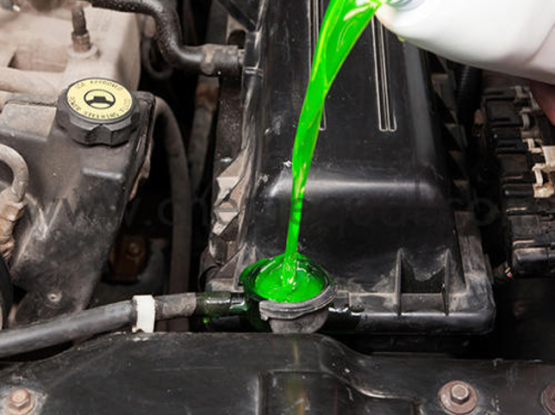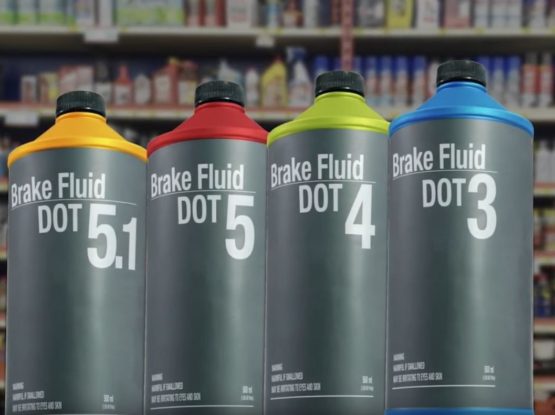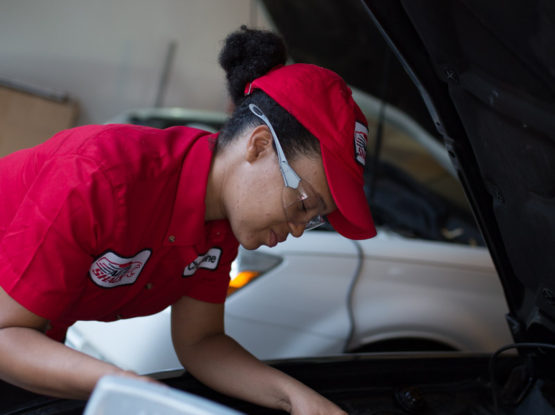UNDERSTANDING COOLING SYSTEM BASICS AND OVERHEATING
The cooling system in your car removes excess heat from the engine by transferring the heat via a heat exchanger-the radiator. If you’re experiencing winter chills in your car however, a smaller version of the radiator called the heater core ushers the heat into the passenger cabin – effectively removing heat from the engine and making it available to the vehicle occupants-this is why you’re encouraged to turn on your heat if your vehicle starts overheating.
By turning on your heat, you draw heat from the engine into the passenger cabin, helping the engine to run a little cooler. Of course, this isn’t meant to be a permanent solution to your over heating problem but rather a tactic to help you get to the nearest repair shop.

To perform its job, the cooling system must cool the engine enough to prevent damage while keeping the engine warm enough for efficient operation. An engine that runs too hot may cause head gasket and cylinder head damage. An engine that runs too cold may lead to poor fuel economy, possible damage to the catalytic converter and potential performance issues due to back pressure (from failed catalytic converter and clogged exhaust system).
In addition, the cooling system must work in under all operating conditions, adjusting to changes in engine load, vehicle speed etc. Finally, it needs to contain increased pressures caused by engine heat without losing its structural integrity.
HOW THE COOLING SYSTEM WORKS
Cooling systems in most modern cars use the same components. Typically, a belt-driven water pump draws water from the radiator and pumps it into the engine.
The water pump sends coolant through the engine block and cylinder head, reducing combustion chamber temperatures. A thermostat controls coolant flow between the engine and the radiator. When the engine is cold, the thermostat stays closed to prevent coolant flow. As engine temperature rises, the thermostat opens and allows coolant to flow to the radiator. Most thermostats open between 190 and 210 Fahrenheit (90 to 100 Celsius).
Outside the engine, the cooling system uses hoses to provide a path for coolant travel. Hoses are typically made of rubber and/or fabric components to help control the effects of engine vibrations.
The radiator and heater core both dissipate engine heat from the coolant to the air. The radiator releases heat into the atmosphere while the heater core directs heat into the passenger compartment.
Lastly, there is an expansion/overflow tank and radiator cap as part of the cooling system. The cap has a pressure rating on it and allows pressure to build in the cooling system. The radiator cap relives the pressure if it builds up to a point above the rating on the cap. If the wrong radiator cap is installed on the cooling system, system damage may occur. This is one of the main causes of vehicle overheating on Ghanaian roads.
To prevent boiling, the cooling system operates under pressure-the pressure on the radiator cap. This increases the boiling point and maintains cooling efficiency. You should always replace the cap with a cap of the same pressure rating should you ever have a need to do so.
If you need coolant, don’t skimp on quality. We have quality coolants in stock. Please click here to check out our online store or call us for assistance.
Connect with us
Facebook: https://www.facebook.com/autoshackghana/
Instagram: https://www.instagram.com/autoshackghana/
YoutTube: https://www.youtube.com/channel/UClBPm4NK4te3KrwJDSgEWjQ/videos
Twitter: https://twitter.com/autoshackghana
This article was written by Kwabena Mensah. If you have any questions for him or would like to connect with him, please do so in the following ways
Linkedin: https://www.linkedin.com/in/kwabena-mensah-38490715/
Facebook: https://www.facebook.com/wofakwabenamensah
Instagram: https://www.instagram.com/kwabena__mensah/




